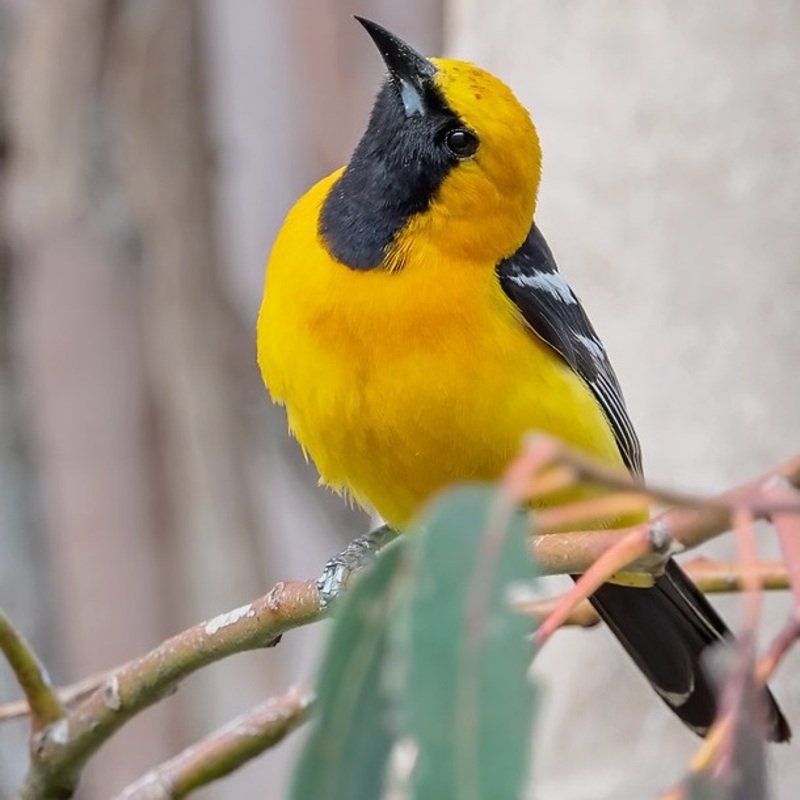The hooded oriole, Icterus cucullatus is a New World oriole of medium size. The male of this species is brilliant orange to light yellow in color, with a black back, face, tail, and bib, as well as two white bands on the wing. Females are more olive in hue with golden highlights.
Quick Overview: Icterus Cucullatus – Hooded Oriole
Body size: Around 7-8 in (18-20 cm) and a weight of 23 g (0.8 oz)
Main colors: Orange-Yellow, Black, White, Olive-green
Range: Southwestern United States
Migratory Bird: Yes
Best time of the year to see in the U.S.: June, July, August, September
Conservation Status: Least Concern
Hooded Oriole Description
Sexual dimorphism exists in Hooded Orioles. Males are orange-yellow in hue and have black faces, tails, wings, and backs. The bird’s wings will feature two white feather bands. While both sexes have the same two white bands on their wings, the female is olive-green with a golden underside. The Hooded Oriole’s beak has a small downward curvature that ends in a sharp tip, allowing it to dine on tubular blossoms.

Size
These birds have a length of 7-8 in (18-20 cm) and a weight of 23 g (0.8 oz). Their wings could range from 11.25-12 in (29-30 cm).
Feeding
The Hooded Oriole is a neotropical migrating bird. Typically, these birds are found in riparian environments. Humans have introduced several non-native tree species. These trees have improved the number of suitable nesting places for orioles. As a result, orioles may be found in various deciduous and riparian woods, as well as human settlements, most frequently near ranches or cities.
Habitat
The Hooded Oriole is a neotropical migrating bird. Typically, these birds are found in riparian environments. Humans have introduced several non-native tree species. These trees have improved the number of suitable nesting places for orioles. As a result, orioles may be found in various deciduous and riparian woods, as well as human settlements, most frequently near ranches or cities.
Behavior
The Hooded Oriole is a very gregarious bird. They frequently congregate with closely similar species, such as the Bullocks Oriole. Hooded Orioles migrate to Mexico in the winter, primarily up and down the southwest coast. Jays, ravens, and crows feed on Oriole eggs and nestlings. Various raptor species occasionally prey on adult birds. In California, their nests are parasitized by both bronzed and brown-headed cowbirds.
Icterus Cucullatus Scientific Classification
- Kingdom: Animalia
- Phylum: Chordata
- Subphylum: Chelicerata
- Class: Aves
- Order: Passeriformes
- Family: Icteridae
- Genus: Icterus
- Species: Icterus cucullatus
Best time of the year to see
The best time to see these birds in the United States is during the summer season (June – September).
Distribution of the Hooded Oriole in the USA
North America is home to Hooded Orioles. Hooded Orioles are seen in southern Texas, Nevada, Arizona, and central California. By late September, they have made their way south to New Mexico.
